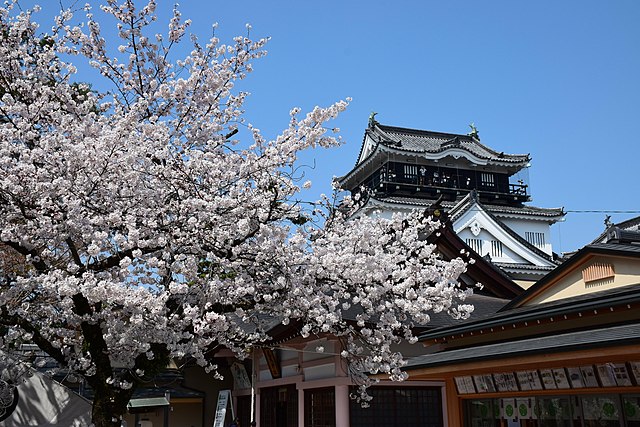Tokugawa Ieyasu was the founder and first shōgun of the Tokugawa shogunate of Japan, which ruled from 1603 until the Meiji Restoration in 1868. He was one of the three "Great Unifiers" of Japan, along with his former lord Oda Nobunaga and fellow Oda subordinate Toyotomi Hideyoshi. The son of a minor daimyo, Ieyasu once lived as a hostage under daimyo Imagawa Yoshimoto on behalf of his father. He later succeeded as daimyo after his father's death, serving as ally, vassal and general of the Oda clan, and building up his strength under Oda Nobunaga.
Image: Tokugawa Ieyasu 2
Image: Tokugawa Ieyasu kao
Okazaki Castle, the birthplace of Tokugawa Ieyasu
An ukiyo-e print depicting the Battle of Batogahara. In his early days as daimyo of Mikawa, Ieyasu had difficult relations with the Jōdō Shinshū temples which escalated in 1563–1564.
Shogun, officially sei-i taishōgun , was the title of the military rulers of Japan during most of the period spanning from 1185 to 1868. Nominally appointed by the Emperor, shoguns were usually the de facto rulers of the country. Although during part of the Kamakura period and Sengoku period, shoguns were figureheads themselves, with real power in the hands of the shikken (執権) of the Hōjō clan and kanrei (管領) of the Hosokawa clan. In addition, Taira no Kiyomori and Toyotomi Hideyoshi were leaders of the warrior class who did not hold the position of shogun, the highest office of the warrior class, yet gained the positions of daijō-daijin and kampaku , the highest offices of the aristocratic class. As such, they ran their governments as its de facto rulers.
Sakanoue no Tamuramaro (758–811) was one of the first shoguns of the early Heian period.
Taira no Masakado's rebellion is historically significant as the first rebellion of the warrior class and the first attempt of the warrior class to establish a government.
Minamoto no Yoritomo, the first shogun (1192–1199) of the Kamakura shogunate
Hōjō Tokimasa shifted the source of power in the shogunate from the shogun to the shogun's assistant, shikken, and established the rule of the Hōjō clan.








